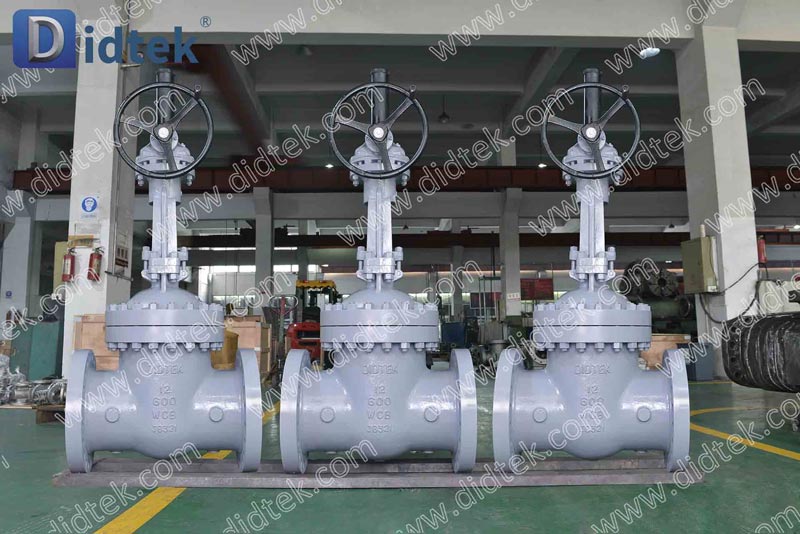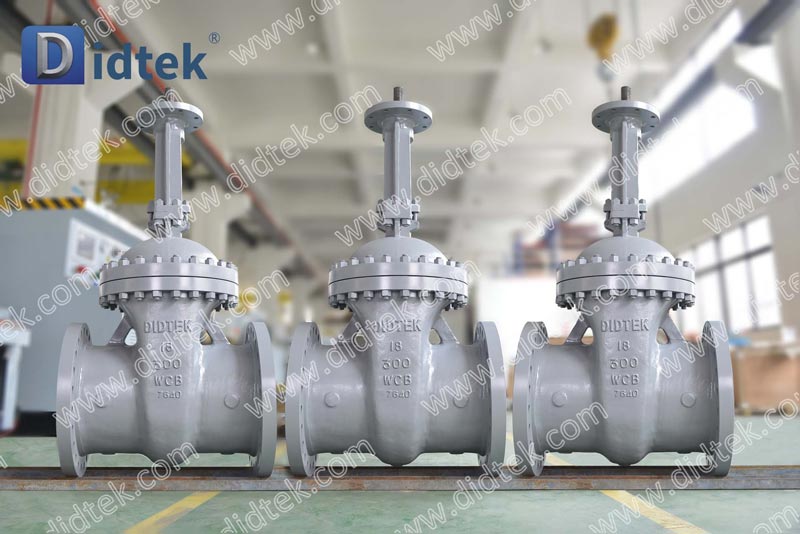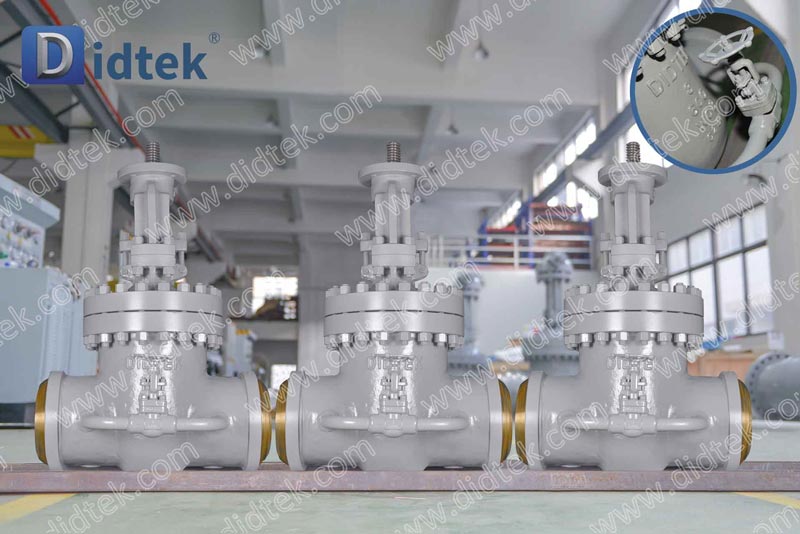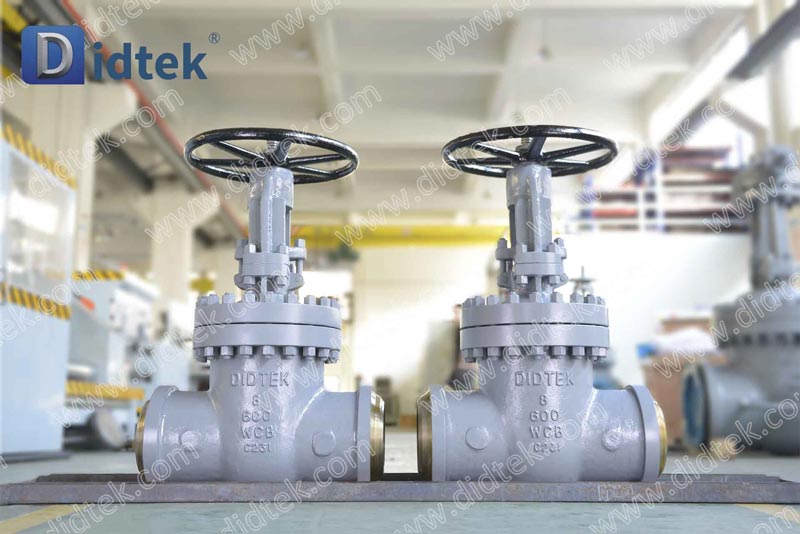Gate valves are a product of the industrial revolution. While valve designs such as ball and plug valves have been around for longer, gate valves dominated the industry for decades, until recently ceding significant market share to ball and butterfly valve designs.
What makes gate valves different from ball, plug, and butterfly valves?
Gate valves differ from ball, plug, and butterfly valves in that their closing element, a plate, gate, or bucket type valve, rises through multiple rotations of the shaft or stem, at the bottom of the stem, out of the passage, and into the top, the bonnet. These valves that open in a linear motion are also known as multi-turn or linear valves, unlike quarter-turn valves, where the stem rotates 90 degrees and does not normally rise.
Gate valves are available in dozens of different materials and several pressure ratings. They range in size from NPS ½ inch, which fits in your hand, to NPS 144 inches, which is as big as a truck. Gate valves are made from castings, forgings, or welded components, but castings dominate the design.

What are the most desirable features of a gate valve?
A gate valve is capable of opening fully, leaving little obstruction or friction in the flow orifice.
An open gate valve provides approximately the same resistance to flow as a section of pipe with the same port size. As a result, gate valves are still strongly considered for blocking or switching applications. In some valve terminology, gate valves are referred to as blocking valves.
What do I need to know about using gate valves?
Gate valves are generally not suitable for regulating flow or operating in any direction other than fully open or fully closed. Using a partially open gate valve to throttle or regulate flow may result in damage to the valve flap or body seat due to collision of the seat surface in a partially open turbulent flow environment.
What types of gate valve stems are available?
On the surface, most gate valves look somewhat similar. However, internally there are many different design possibilities.
Most gate valves consist of a valve body and a bonnet with a closing element called a disc or gate valve. The closing element is connected to the stem, which passes through the bonnet and is eventually connected to a handwheel or other actuator to operate the stem. The pressure around the stem is controlled by the packing compressed in the packing area or cavity.The movement of the gate valve disc on the stem determines whether the stem rises or penetrates the disc as it opens.
This response also determines the two primary stem/disc styles for gate valves: rising stem or non-rising stem (NRS).
1. Rising Stem
The rising stem is the most popular stem/disc design style in the industrial market
2. Non-Rising Stem (NRS)
Non-rising stems have long been favored by the water and pipeline industries, and some marine applications that still use gate valves and are space constrained also use the NRS style.The most common stem/cover designs used on industrial valves are the male thread and yoke (OS&Y).
The OS&Y design is preferred for corrosive environments because the threads are outside the fluid sealing area. It differs from other designs in that the handwheel is attached to the bushing at the top of the yoke, not the stem itself, so the handwheel does not rise when the valve is opened.

What are the modifications to a gate valve?
When valve professionals talk about industrial gate valves, they often hear the word "trim".
Trim has nothing to do with the slimness or fit of the valve; rather, it refers to the internal components of the valve that are exposed to tremendous pressure, or to a harsh combination of erosion and corrosion.
In a gate valve, the trim parts are the stem, valve seat area, body seat, and back seat (if applicable).
Common bronze or brass valves typically have trim parts of the same material as the body and bonnet. Cast steel and ductile iron valves have either all-iron trim parts or bronze trim parts. The term for iron valves with bronze trim is "iron body, bronze mounted" (IBBM).
Steel valves can be equipped with a number of different trim pieces. Stellite, Hastelloy, 316ss, 347ss, Monel and Alloy 20 are some of the materials often used for gate valve trim.
What are the different types of gate valve discs?
The heart of the gate valve is the closing element, which can come in two designs: wedge or parallel seat
Design 1: Wedge design
The wedge design is the most popular and has been around since 1843 when it was invented by the famous English engineer James Nasmyth. The wedge design utilizes a slightly angled disc with an identically angled body seat to achieve a tight shutoff. These valves are seated by applying torque to push the valve flap
firmly into the seat.
Three types of wedge flaps are available:
1. Solid wedge
The solid wedge has been around the longest and there was a time when almost all wedge gates were of the solid type.
The disadvantage of the solid design is that it does not have any resilience and if the body/seat is deformed due to extreme temperature fluctuations or piping stresses, the solid disc can become stuck in the seat.
Solid discs are still the standard for bronze, cast iron, water service and compact carbon steel valves (API Type 602).
2. Flexible Wedge Valves
Flexible wedge valves are just that: flexible.
By adding a recess or groove to its perimeter, a flexible valve flap can accommodate temperature changes and adverse piping stresses without binding. The flexible design is also easier to manufacture because minor defects in seat angle can be compensated for by the flexibility of the disc.
By far, the flexible edge design is the most common type found on commercial gate valves in industrial applications.
3. Split Wedge
The split wedge consists of a two-piece design with mating surfaces on the back of each half of the disc. These mating surfaces allow the downward thrust of the stem to be transferred evenly across the disc surface and seat.
This flexible design also provides protection against jamming due to thermal expansion.
Wedge gates are guided by grooves or ribs cast or welded into the valve body. These wedge guides keep the valve flap in line when opening or closing and also keep the flap from sliding against the downstream seat during opening and closing.
The disadvantage of the split design is that in dirty service, residue or debris may clump between the two disc halves, causing the valve to not seat properly or even jam.
Split wedge designs are commonly found in stainless steel and high alloy valves, as well as many small bronze valves.

Design 2: Parallel Seat Design
Parallel seats can be spring loaded to provide a tighter seal or to create a positive seal in the upstream direction. Parallel seats are positional seats, meaning that the position of the valve disc determines the sealing effect, not the amount of force (torque) exerted on the disc by the valve stem.
Valve body/cover design
Gate valves generally consist of two main parts: the valve body and the bonnet.
These two parts make up the pressure-containing envelope of the gate valve. There are various designs for the interface between these two components.
1. Threaded connection
The threaded connection is the simplest design. However, it is only used for inexpensive, low-pressure bronze valves.
2. Joint connection
The union connection is also used mainly for bronze valves, but the union design allows for easier disassembly for service and maintenance.
3. Bolt-on bonnet joint
The bolted bonnet fitting is the most popular fitting and is used on most of the gate valves used in industry today. Unlike threaded and union bonnet valves, bolted bonnet connections require a gasket to seal the connection between the valve body and bonnet.
4. Pressure Seal Joint
Pressure seal joints are created by the fluid pressure in the valve body acting on a wedge-shaped soft iron or graphite gasket wedged between the valve body and the valve cover. On pressure seal valves, the higher the pressure in the valve body cavity, the greater the force on the gasket. Pressure seal bonnets are widely used in high pressure and high temperature applications, such as in the power industry.
5. Welded Bonnet
Welded bonnets are a very popular body-bonnet connection for compact steel valves in sizes 1/2" to 2" and pressure ratings 800 to 2500 without disassembly.
Other gate valve designs
1.Knife gate
Knife gates without bonnet are particularly suitable for use in slurries, such as pulp and paper mills.
Knife gates are very thin and only slightly wider than their closing element (disc). Due to their unique geometry and thin cross section, knife gates are limited to low-pressure applications.
2. Sluice gates
In appearance, the sluice gate does not even look like it belongs to the gate valve family; however, it is characterized as a gate valve based on its sliding disc design.
Gates are limited to very low pressures - in most cases simple head pressure. They are mainly used in wastewater and irrigation systems.

Where is gate valve commonly used?
Although quarter-turn valves have gained the majority of the gate valve market share over the past 50 years, there are still a number of industries that rely heavily on gate valves.
1. Oil and gas industry
Although ball valves have made inroads in natural gas pipelines, crude oil or liquid pipelines are still the domain of parallel seat gate valves.
2. Oil refining industry
In larger sizes, gate valves are still the primary choice for most applications in the refining industry. Robust design and total cost of ownership, including economics of maintenance, are what make this traditional design popular.
Application-wise, many refining processes use temperatures higher than the safe operating temperature of Teflon, which is the primary seat material for floating ball valves. High-performance butterfly and metal-seated ball valves are beginning to be used more in refinery applications, although their total cost is often higher than the cost of gate valves.
3. Water industry
The water industry sector is still dominated by iron gate valves. They are reasonably priced and have a long service life, even in buried applications.
4. Power industry
The power industry uses alloy gate valves for applications involving very high pressures and very high temperatures. Although some newer Y-shaped globe valves and metal-seated ball valves designed for blocking service are found in power plants, gate valves are still preferred by plant designers and operators.
What material is a gate valve?
Steel and iron are the most popular gate valve materials of construction, with steel being the choice for most industrial applications and iron for water, wastewater, and heating, ventilation, and air conditioning (HVAC).
Other popular gate valve materials of construction include stainless steel, bronze and high alloys such as Hastelloy and Inconel.
Design and construction standards for gate valves are published by the American Petroleum Institute (API), the Manufacturers Standardization Society (MSS), the American Water Works Association (AWWA), and the American Society of Mechanical Engineers (ASME).

